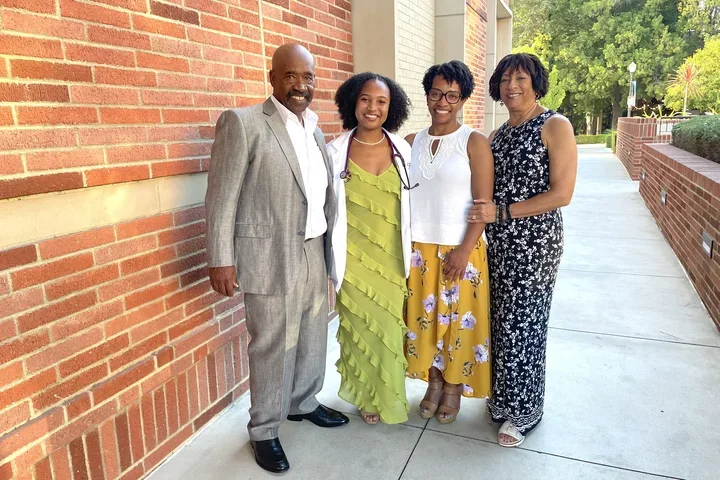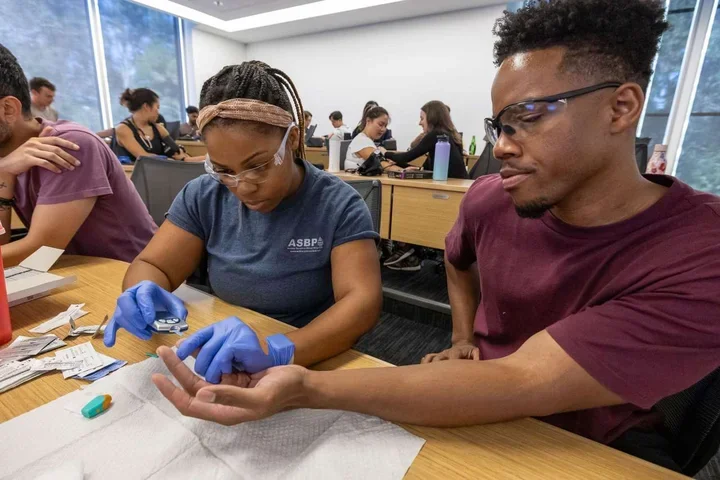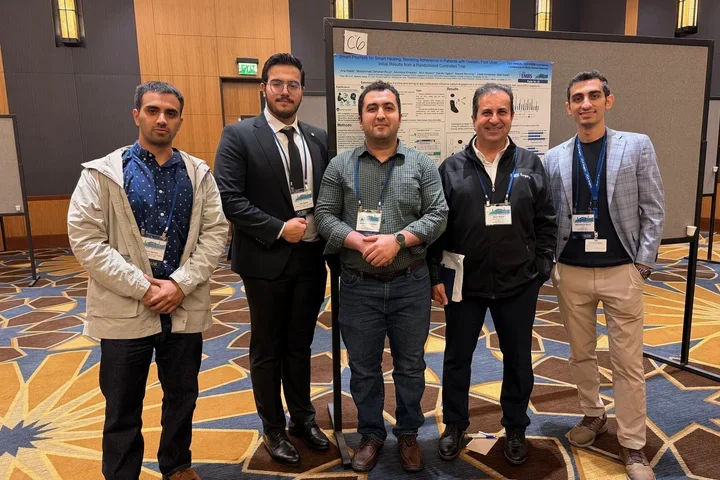A Novel Allergy Treatment Turned His Medical Fears into Career Goals
Student Spotlight
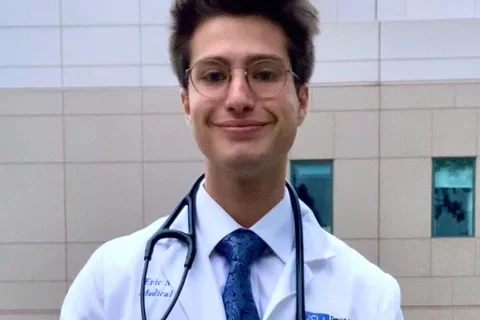
Meet Eric Smith
Growing up, medical student Eric Smith found doctors a little scary. Medical appointments dominated his schedule. Hoping to relieve his severe allergies—which kept him up all night and tired all day—doctors administered test after test and shot after shot.
“I was no stranger to being poked and checked,” Eric recalls. “I ended up being kind of scared of medicine at first.”

Eventually, an allergist gave him a novel sublingual immunotherapy designed to increase his body’s tolerance to many different allergens. It worked. A few years after Eric started taking the treatment, he considered his allergies effectively cured. He stopped using other allergy medications and felt better than ever.
Eric looked at medicine with a sense of awe and curiosity instead of fear from that point on. The experience changed his life as a patient. It also put him on the path to becoming a doctor.
Considering a future in medicine, Eric, then a high-school student, began volunteering as an emergency medical technician (EMT).
“I thought if I got some experience, I could really see if this is what I wanted to do for the rest of my life,” he says.
He loved working as an EMT and especially appreciated the variety, the constant learning, the camaraderie, and the people.
“There are so many incredible people to meet, and they all have such interesting stories.”
Fun fact: Eric has a deep appreciation for Los Angeles architecture, and he loves pointing out landmarks to visitors. (His favorites include the Bradbury Building and the Getty Center.)
Discovering a Passion for Translational Research
Eric’s experience with allergies affected his budding medical career beyond simply piquing his interest in pursuing one. Shortly after beginning his undergraduate studies at Stanford University, he connected with a faculty member—a researcher—his allergist told him he just had to meet.
Her name was Kari Nadeau, MD, PhD, a fellow of the American Academy of Allergy, Asthma, and Immunology. She developed the formula behind the novel immunotherapy that had essentially cured Eric’s allergies.
He would have found simply meeting her delightful, but she ended up offering him a job in her lab at Stanford’s Sean N. Parker Center for Allergy and Asthma Research. Eric loved working in the lab, especially focusing on translational research with potential to quickly benefit patients.
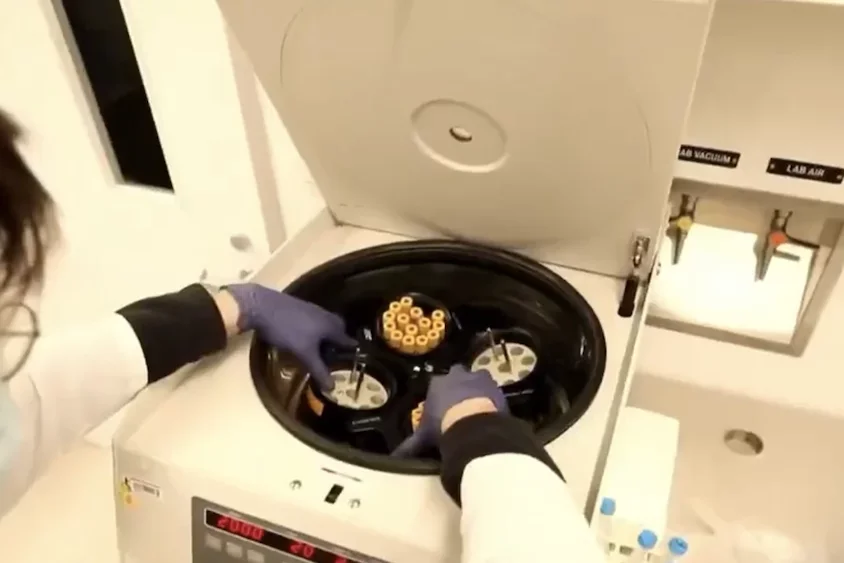
“Learning about problems and wanting to solve them drew me toward research,” he says. “I couldn’t wait to create projects and understand everything I could about the problem.”
One core project focused on designing and building a biobank to clarify the effects of smoke exposure. Working with fire departments, he and his team obtained numerous samples from first responders with extreme smoke exposure from wildfires and urban firefighting. They leveraged this groundwork to perform immunotoxicology assays.
Working in the lab introduced Eric to many areas of research and medicine he remains passionate about today, including translational research, public health, wildfires, and immunology. It also revealed how many more problems needed to be solved—and how much more research would be needed to solve them. He wanted to be involved with that research.
“The integration of research and clinical care is very important to me.”
Life as a Med Student
Eric, a Los Angeles native, had little trouble deciding where he wanted to attend medical school.
“I’ve always wanted to work with the populations in L.A. and give back to the community that helped raise me,” he says. “UCLA was my dream school in high school and middle school, for that matter.”
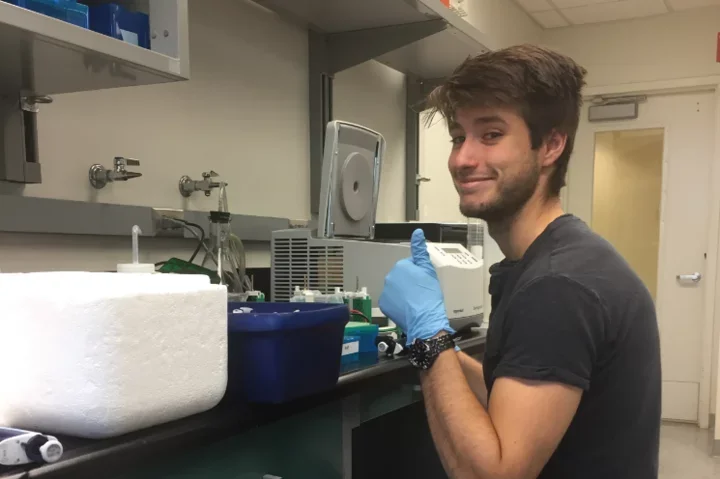
After having such a fulfilling experience at Stanford’s Parker Center, Eric arrived at the David Geffen School of Medicine at UCLA (DGSOM) eager to immerse himself in more research. He connected with Ashley E. Kita, MD, an otolaryngologist and a professor in DGSOM’s Department of Head and Neck Surgery.
Working with her, Eric continues engaging in the translational research he found so fulfilling during his time at Stanford. Every day, he learns more about the field of otolaryngology and how advanced software and bioengineering tools can improve surgical procedures and patient care overall.
Choosing a Specialty Brings the Future into Focus
Eric plans to specialize in otolaryngology, sometimes referred to as head and neck surgery or ear, nose, and throat (ENT) surgery. This specialty satisfies his interest in performing surgery while also enabling him to help people like his past self, people suffering from severe allergies.
“I love head and neck surgery because the head is what you present to the world,” Eric says. “It’s responsible for eating, drinking, listening to music—things we all love. I want to help people who might be struggling to enjoy those things for any reason.”
Eric knew for certain he’d found his specialty during rotations, specifically while reading one surgeon’s patient notes.
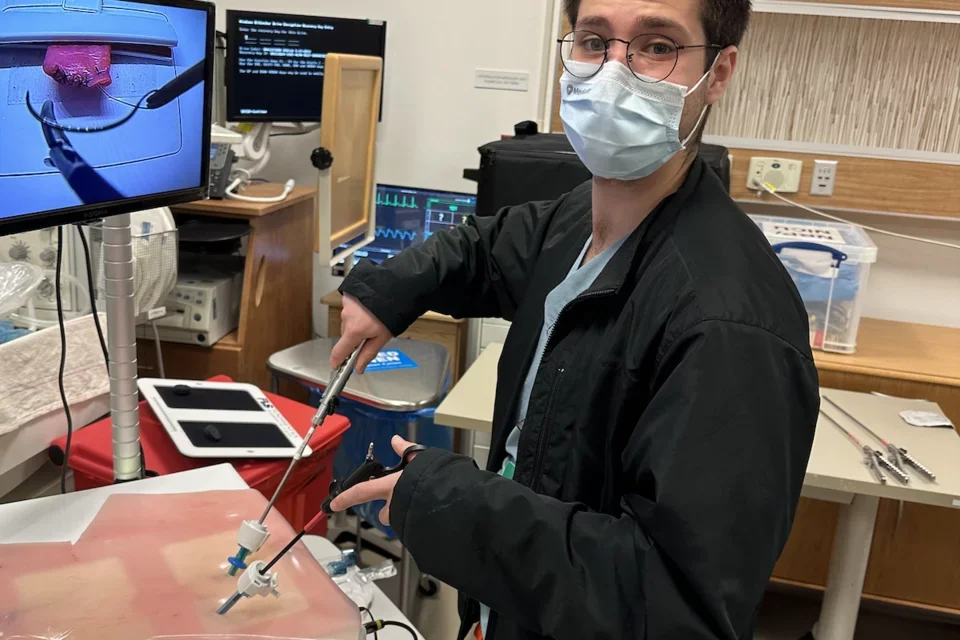
“I didn’t have to look at the signature. I could tell who’d written the note because they were one of the most caring individuals I’ve ever met,” he recalls. “I knew then I wanted to go into head and neck surgery. I wanted to work with incredible people like that.”
Set to graduate in 2025, Eric can now clearly envision the future he’s been working toward for so long. He may get closer every day to completing medical school, but he’s committed to remaining a student for the rest of his life.
“As a student, you see how much you don’t know and how much more you want to learn,” he says. “Even though I’m getting close to the end of medical school, I know there’s still so much I want to keep researching and learning about. The education never ends.”
